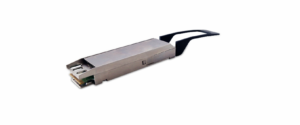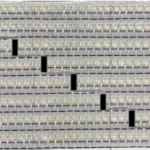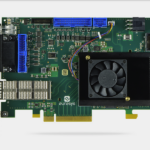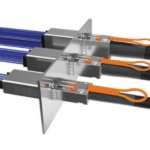IO Loopbacks connect digital data streams to their source without purposeful processing or modification. This serves as a diagnostic test for a device and other nodes in the network infrastructure. The return signal is compared with the transmitted signal.
For several generations of electronic equipment, using a short cable assembly, molded very-high-density cable interconnect (VHDCI), or another type of plug connector was typical. Recently, modern datacenter pluggable modules have been used for most high-speed interface links.
There are few suppliers offering this niche product application, especially for 400G QSFP-DD and OSFP products. Next-generation Loopback module technology and functionality, as well as the high-volume mating cycles used in a shorter timeframe, offer critical support to current and next-generation Ethernet NICs and switch rollouts. However, these modules must assist the high-volume production of Ethernet NICs, routers, switches, and director equipment.
The 800G QSFP-DD and OSFP Loopback modules support the popular Radix switch fabric network rollouts and the many DAC and ADAC ports in Hyperscaler and HPC datacenters. Most of the newer IO Accelerator and Systems interface types use 4 and 8-lane links, operating with 106, 112, or 128G per-lane PAM4 data rates.
The current market
For a successful application, the new 800G QSFP-DD and OSFP Loopback modules must be smarter, more active, and more reliable than previous options.
The following images showcase the topside of ColorChip’s 800G QSFP-DD module and the top and bottom of the OSFP module…



Suppliers such as ColorChip provide various critical thermal profiles that uniquely match several active optical chips. These profiles support multiple IO interface accelerators and fabric architectures.
Also, enhanced heat dissipation technology is used for high-power testing. This is necessary to simulate and validate the thermal-flow circuits and higher heat-active device profiles. The temperature test points are defined for optimum monitoring and parameter control.

ColorChip’s 800G QSFP-DD and 800G OSFP Loopback solutions include programmable, software-enabled, and adjustable power-consumption emulation evenly distributed to four regions.
For the QSFP-DD Loopback module, each region is individually programmed between 1.0 through 10.0W, with 0.5W stepping.
For the OSFP 1.0 through 7.5W, with the same 0.5W stepping, the operating temperature is -40° to 85° C. A two-wire interface is used to integrate the digital diagnostic monitoring. The enhanced EMC/EMI design has been validated for several environmental requirements since the smaller 100+G electrical signals can escape small gaps.
ColorChip modules use an insulation heat warning and safety pads to minimize the risk of burns to operators. Custom EEPROMs and mappings are also available.
Key features of the new ColorChip 800G QSFP-DD and OSFP Loopback modules include:
- The hot-pluggable Loopback circuits use built-in surge-current mitigation technology.
- The modules have an automated mating-unmated counter designed for 2000 and higher mating cycles.
- The PCB edge-finger gold circuit pads are plated based on the mating cycle requirements with optimized PCB edge chamfers. This unique feature offers four times the lifespan of conventional Loopback testers, ensuring robust testing without mating or contact failures during production.
- The QSFP-DD module is CMIS 5.0, QSFP Hardware Spec 6.01, and UM10204 I2C-Bus rev 6.0 spec-compliant. The OSFP module is CMIS 5.0, RoHS, OSFP MSA 3.0 spec-compliant.
- New CMIS upgrades, the latest draft, or downgrades to other versions should be available with a firmware update.
- The standard pull tab used with a 30-watt Loopback is green/blue/red (and can be customized), and the 0-watt Loopback pull tab is black/white.
- Both module types use +3.3V power supplies. They also use multi-color LED indicators for a quick visual status of the high/low power modes.
- Both modules support 8 lanes of 10G/25G NRZ and 56G/112G PAM4 data rates. They can also have different speed rates on different lanes or trunked link applications.
- The signal integrity and link performance meets IEEE802.3ba, 802.ba, 802.3bj, 802.3cg, and 802.3ck specifications.
ColorChip also offers several pluggable copper and optical transceivers, DACs, ADACs, AOCs, PICs, optical chipsets, and system-on-glass. Their Open Compute Project (OCP) selected 800G transceiver technology enables the Cloud, Fabric networks, Hyperscaler, and HPC market segments.


Some suppliers offer products with various power consumption levels. The most common is the 30W modules. Typically, the 100+G differential pair electrical signal’s tiny wavelengths are well-contained in the tighter dimensionally controlled EMC/EMI designs. It’s likely more capabilities will be added to Loopback modules in the future as customers learn about new firmware support.
Applications
- The 4-lane interfaces include: Ethernet, FibreChannel, GenZ, NVMe, InfiniBand, OIF, and SONET/SDH
- The 8-lane interfaces include AXON/BlueLink, BIX, CXL, GenZ, NumaLink, NVLink, NVMe, OpenCAPI, and Slingshot
Observations
The 800G interconnect and interface development is costly — and so is the product testing. It’s a value-added solution that can support the testing and validation of multiple IO interface accelerators and fabric network ports with different heat profiles.
ColorChip’s 800G QSFP-DD, OSFP Loopback modules provide a cost-effective alternative to meet production and development goals.
The 16-lane 1600G or 1.6T OSFP-XD Loopback modules will likely be required later this year or early in 2023. Aside from the 100+G per-lane applications and Loopback products, there’s a focus on developing the whole set of copper and optical OSFP-XD interconnects. This includes Loopback modules for Ethernet IEEE802.3df 212G PAM4, OIF CEI 224G, and possibly several ASIC 256G per-lane electrical applications. More research on the 3.2T OSFP-XD is also likely to occur.
It will be interesting to see how fast next-generation transceivers and Loopback modules are developed and validated for the OSFP-XD 16-lane applications. Ideally, customers will work with interconnect supplier partners that can support the signal, power, engineering, and photonic integrity of the future of 200+G per lane Loopback modules.





Leave a Reply
You must be logged in to post a comment.